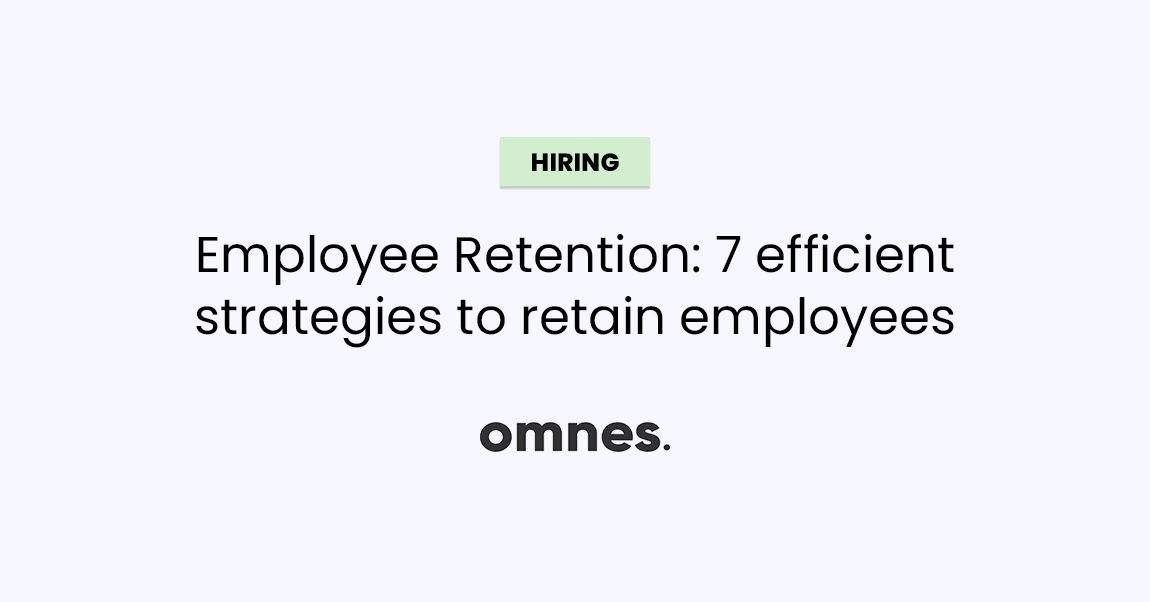One of the definitions of Employee Experience is that it represents a sum of employees’ thoughts, observations, and senses during each stage of their journey through an organization. The short version of this term is EX. All the touchpoints an employee has with their employer count as Employee Experience.
The journey begins when the employee is still a candidate, whether they applied for the job, or if they were recruited. It goes on during the entire time they stick around.
Another definition implies that Employee Experience can stand for the combination of the cultural environment, physical environment, and the technological environment.
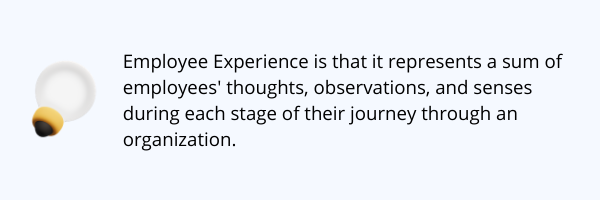
Each of these definitions is accurate. However, every company has its unique ways, preferences, methodologies, goals, and values. All these factors influence the Employee Experience and what it represents within an organization.
The importance of Employee Experience
All employees form opinions and obtain particular perceptions about their employment, which is why each employer needs to strive to enhance their Employee Experience. EX is quite similar to Customer Experience. Positive reviews and feedback turn into a positive outcome. Excellent Customer Experience shows that a company is willing to acknowledge their needs and that it respects them. Not only EX and CX are much alike; they are also closely tied to each other.
An outstanding Employee Experience will undoubtedly lead to high-grade Customer Experience.
The key points to describe the significance of Employee Experience involve its impact on:
- Recruiting
- Retention
- Engagement
Employee Experience and Recruiting
All job seekers check out job boards regularly. In addition to reading the requirements and overall information about a company while searching for a suitable career opportunity, candidates also read the reviews. Websites like Glassdoor represent a valuable source of information for every talent out there.
Dealing with Online Reputation Management (ORM) is one of the most essential parts of the recruitment process. Attracting candidates can get much easier and less time consuming for those organizations with superb Employer Branding strategies.
The need to read the reviews, and all available information before choosing to enter a hiring process leads us to a single conclusion. Every job seeker wonders what it’s like to work for a particular company. Which shows just how vital employee experience is.
Start to attract new candidates as an inside job. It will drive results.
Employee Experience and Retention
Every HR professional and every recruiter knows about the relevance and gravity of a good retention strategy. Ameliorating employee retention and lowering the turnover rate is tremendously important, and it has a colossal impact on the company’s budget.
Some people choose to leave their companies early in their tenure. The majority of these cases were caused by the poor conduction of the onboarding process.
A simple decision such as being more dedicated to carefully structure the pre-boarding and the onboarding process has a massively positive impact on Employee Experience, and their motivation to adapt to the new environment.
A proper introduction requires a relatively small effort, but it can change everything for a newly hired employee. Don’t hesitate to show off your company’s culture.
Employee engagement and Employee Experience
Some tend to interpret these two terms as synonyms. Employee engagement can’t be fully reached without the strong Employee Experience. And vice versa. Employee engagement reflects employees’ commitment to their organization, the time, energy, and efforts they are willing to invest in their daily tasks.
Engagement also influences retention. People who are passionate about their jobs are more likely to stay within the organization that treats them respectfully and encourages them to grow.
They will also achieve more and perform better.
Enabling and empowering the employees to be part of a healthy and prosperous working environment works like a charm. Getting blessed three times over isn’t a fairytale, it’s empirically proven in terms of Employee Experience.
How to measure Employee Experience
The indisputable relationship between employee experience and customer experience suggests that businesses can leverage employee engagement and content to outperform other similar organizations.
As companies set their direction towards the employees’ well-being, measuring and refining how employees feel about their work is becoming more and more critical.
Measuring Candidate Experience sounds more manageable than it actually is, because employees’ satisfaction, motivation, and aspirations can be pretty subjective, which makes them difficult to quantify.
HR staff in charge of measuring the EX should have in mind various employee metrics and KPIs.
Here are some steps that help companies measure the EX
- Creating a starting point
- Benchmarking the collected data
- Detect the areas that need to be improved
- Develop a roadmap
- Talk to the employees
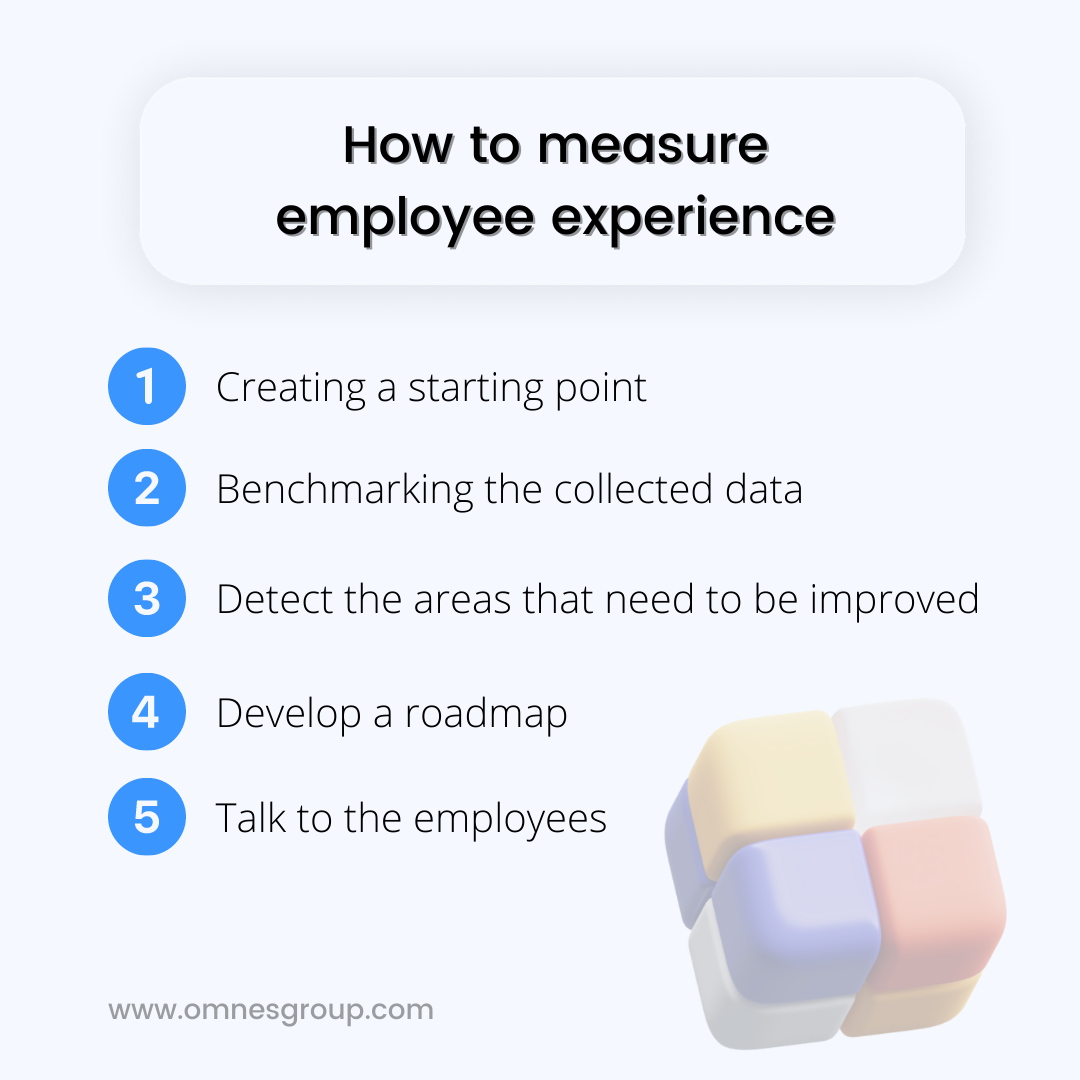
These steps can help the organization understand the current situation, analyze it, identify potential problems or impediments, and start to move towards the solution while maintaining a straightforward communication with the employees.
HR Metrics to measure Employee Experience
Human Resource (HR) metrics have different purposes. They usually serve to obtain a clear image of the current state of affairs regarding the employees, candidates, and working environment in general.
They can keep track of employee turnover rate, pieces of training, the return of capital, hiring costs, etc. They can also be used to measure the EX accurately.
Here are some of the most useful metrics that can help track the efforts and outcome:
- Employee Satisfaction
- Employee NPS (Net Promoter Score)
- Employee Pulse Surveys
- Employee Effort Score
1. Employee Satisfaction
Many organizations use surveys to assemble feedback regarding topics like personal development, working environment, management, and others. Another method that companies use to collect information about their employees’ satisfaction is performing structured Stay Interviews.
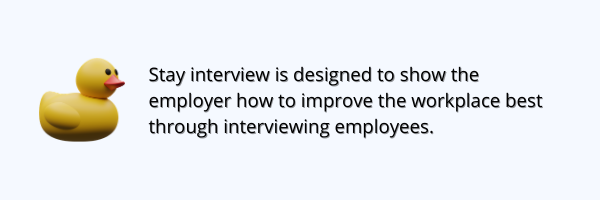
2. Employee NPS (eNPS)
This metric tracks employee loyalty. The eNPS categorizes employees into Promoters, Passives, or Detractors, based on their answer to a particular question. The question is usually a variation of:
Would you recommend our company to your friends?
3. Employee Pulse Surveys
Employee Pulse surveys use the strength of real-time constant employee feedback, which paints an accurate representation of employees’ happiness. Insights given to HR by employee pulse surveys can be priceless when building and preserving a culture of engagement and promoting an agile approach while doing so.
4. Employee Effort Score
The Customer Effort Score represents a customer experience metric created to trace how much work a customer has to put forth to get a problem solved. The Employee Effort Score applies the same concept to a company’s workforce. It determines the effort employees invest, and it uses a modification of the CES questions.
The Employee Effort Score can decide if the tools and methods accessible to employees boost or block their ability to perform efficiently daily.
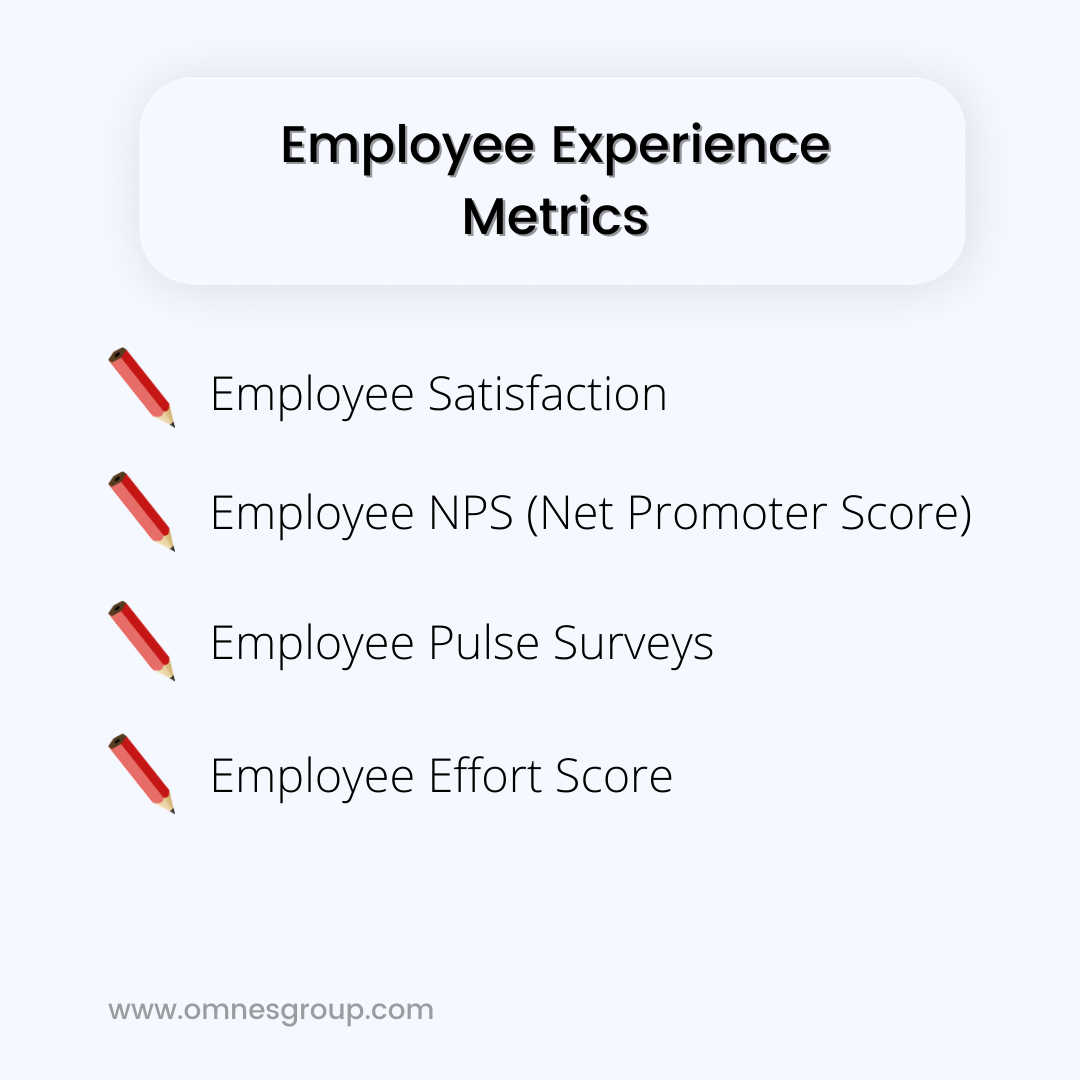
Improve your Employee Experience
Present-day businesses are usually offering essential benefits like health insurance to their employees. But they should also provide employees with excellent experience in the workplace. Culture, advantages, physical work environment, and tools a company offers for their employees count and will lead to a positive EX.
Great employee experience improves talent acquisition results and increases employee retention rates.

